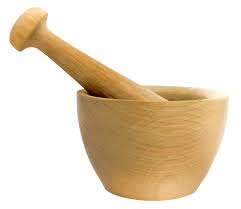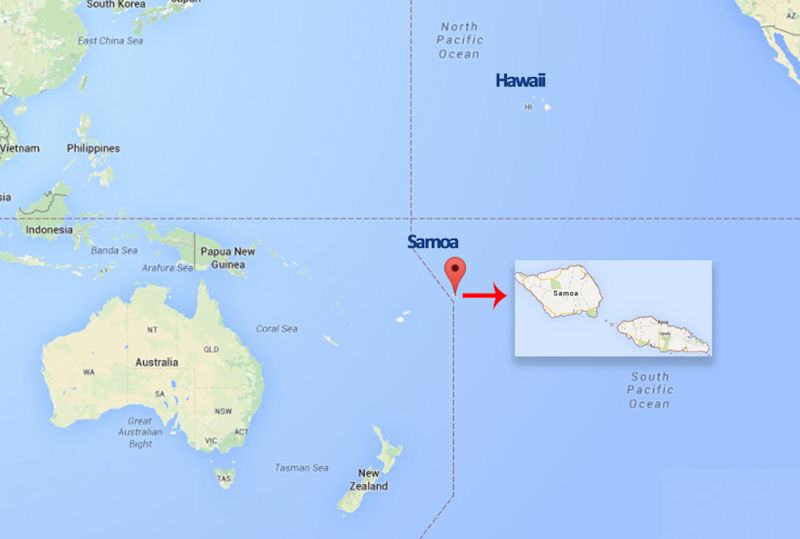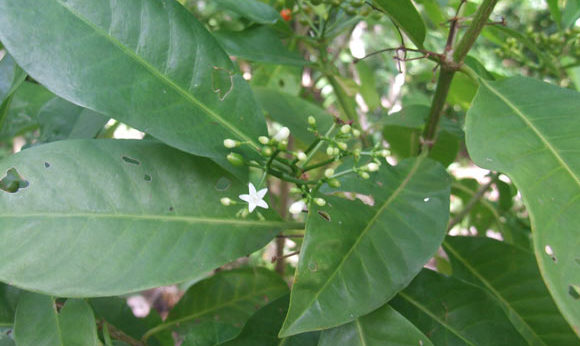Researchers say leaves of the matalafi plant may also potentially be useful in treating inflammation, cancer, diabetes cardiovascular diseases, and more
The Psychotria insularum plant, known locally as matalafi, have been used for generations in Samoa to treat many types of illnesses.
The new study is to be published by PNAS, which is the Proceedings of the National Academy of Sciences, the official journal of the National Academy of Sciences (NAS) . Researchers tested how the the Samoan plant, matalafi impacts mammal cells and detailed its anti-inflammatory effects.
The following written content from Guardian

Leaves from a plant which can be found “in back yards across Samoa” could be as effective as ibuprofen in lowering inflammation and could even be used to treat illnesses such as Parkinson’s and cancer, a new study has found.
For centuries, the leaves of the psychotria insularum plant, known locally in Samoa as matalafi, have been used in traditional medicine to treat inflammation associated with fever, body aches, swellings, elephantiasis, and respiratory infections.
“I was sceptical at first, when researching” said Seeseei Molimau-Samasoni, the study’s author and the manager of the plants and postharvest technologies division at the Scientific Research Organisation of Samoa.
“There was a lot of superstition around this plant particularly, even in traditional medicine, but I was keen to find out if I could provide scientific merit to the traditional medicines of the Samoan people,” she said.
“We can now highlight not only its potential as an anti-inflammatory agent but also its potential as a treatment for cancer, neurodegenerative diseases, diabetes, cardiovascular diseases as well as Covid-19.”
Molimau-Samasoni and her colleagues’ findings have been peer-reviewed and are due to be published in the Proceedings of the National Academy of Sciences of the United States of America.
“The leaves are chopped up and the juice is squeezed out. Traditional healers use that juice as drink for their patients. Sometimes they also use the leaves to rub on a person who is unwell or apply it to a wound that needs healing,” said Molimau-Samasoni, adding that traditional medicine runs in her family.

“I grew up with my maternal grandmother and she was a traditional healer,” she said. “When she passed away, she passed on her treatments to me so I’m now kind of a traditional healer myself.”
Molimau-Samasoni acknowledged there was a lot of scepticism and hesitancy shown toward traditional medicine.
“The challenge between modern medicine and traditional medicine is the instances where people focus on just one type of medicine before seeking the other, so a case where people seek anti-cancer treatments from traditional healers but then present to the hospital later on with stage four cancer, when it’s too late for modern medicine to do anything” she said.
“And so I know many people think traditional medicine is just people mashing leaves together and that people are taking it just for the placebo effect, but you need to remember that traditional medicine has made significant contributions to the world of modern pharmaceuticals, examples of which include aspirin.”

As for matalafi, Molimau-Samasoni said it would likely be years before it is available as an approved medicine but said she also believes it is just the beginning, not only for matalafi, but for broader research into how Samoa’s traditional medicines could be used today.
“I believe we’ve just started to unravel the potential of matalafi. But there’s also honestly hundreds of other traditional medicines here in Samoa to research,” she said.
“We now have a laboratory dedicated to anti-microbial benefits in traditional medicines, a laboratory looking into anti-diabetes activity in traditional medicines and a laboratory looking into anti-cancer activity in traditional medicines. Read more from Guardian





